So, you’ve recently started considering the idea of living off the grid or maybe you just want to be more prepared for any emergencies that may come your way. Either way, storing food for prepping is a smart move. But with so many options out there, it can be overwhelming trying to figure out what the best foods to store are. Don’t worry though, we’ve got you covered! In this article “What is the best food to store for prepping“, we’re going to delve into the topic of prepping and discuss the top foods that you should consider storing.
When it comes to prepping, one of the most important things to consider is shelf life. You want to choose foods that will last a long time without spoiling. Canned goods, such as beans, vegetables, and meats, are a great option as they can last for several years. Another excellent choice is dehydrated or freeze-dried foods, as they have a longer shelf life and retain most of their nutrients. In addition, grains like rice, oats, and wheat are also ideal for storing as they have a high caloric content and can last for a long time if stored properly.
Protein is an essential nutrient that should not be overlooked when prepping. Canned tuna, chicken, and salmon are all excellent sources of protein that can be stored for long periods. Additionally, nuts and seeds are also great options as they are packed with protein, healthy fats, and essential vitamins and minerals. You can choose to store them in their whole form or opt for nut butters for added convenience.
Lastly, let’s not forget about the importance of water in your prepping plan. While not a food per se, it is crucial to have a sufficient supply of clean water on hand. Consider investing in a reliable water filtration system or stock up on bottled water. Don’t forget to rotate your water supply regularly to ensure its freshness.
In this article, we’ve only scratched the surface of the best foods to store for prepping. But don’t worry, there’s much more valuable information to come! Stay tuned as we explore each food category in more detail and provide you with tips on how to properly store and manage these foods for long-term survival. Trust us, you’ll be well-prepared and ready for anything that comes your way!
Introduction to Prepping
Understanding the concept of prepping
When it comes to being prepared for unexpected situations or emergencies, prepping is a term that often comes to mind. Prepping refers to the practice of preparing oneself and one’s household for potential disruptions in the normal flow of life. This can include natural disasters, economic crises, or even personal emergencies. By taking certain precautions and being proactive, individuals can ensure their safety and well-being during challenging times.
Reasons for prepping
There are several reasons why people engage in prepping. First and foremost, it provides a sense of security and peace of mind. Knowing that you have taken steps to prepare for the unknown can alleviate anxiety and stress. Additionally, prepping allows individuals to become more self-reliant, reducing their dependence on external resources during times of crisis. It provides a sense of empowerment and control over one’s own destiny.
Benefits of being prepared
Being prepared has numerous benefits. In times of emergencies, having a stockpile of essential supplies can mean the difference between comfort and hardship. It ensures that you and your loved ones have access to food, water, and other necessities when traditional supply chains are disrupted. Being prepared also allows individuals to help others in need, fostering a sense of community and solidarity. Moreover, prepping can save you money in the long run, as you can take advantage of sales or bulk purchases to build up your supplies.
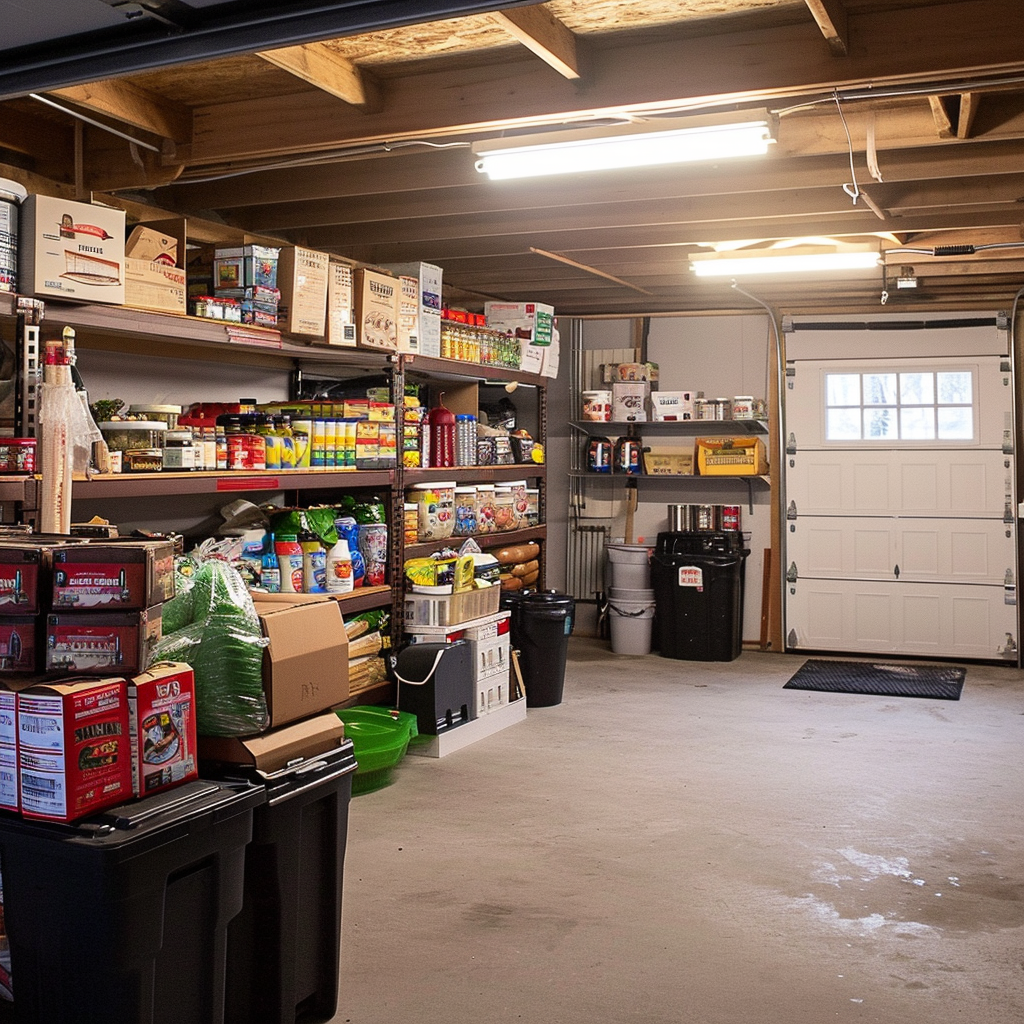
Importance of Storing Food for Prepping
Why food storage is crucial in prepping
Food is one of the most critical aspects of prepping. During emergencies, access to food may become limited or even non-existent. Having a well-stocked food supply ensures that you can sustain yourself and your family during times of crisis. It is essential to consider the nutritional value, shelf life, and ease of storage when selecting food for prepping.
Ensuring food security during emergencies
Food security refers to having access to adequate, safe, and nutritious food at all times. In the event of an emergency, food security becomes paramount. By storing food for prepping, you can ensure that you and your loved ones have access to essential nutrients during challenging times. It eliminates the need to rely on potentially unreliable food supply chains, allowing you to maintain your well-being and sustenance independently.
Long-term food storage considerations
When choosing food for long-term storage, several factors should be taken into account. Firstly, consider the shelf life of the food. Opt for foods that have a long shelf life and can withstand harsh storage conditions. It is also essential to rotate your food supply regularly, using and replenishing the oldest items first. Additionally, consider the storage space required and make sure you have the necessary containers or storage solutions to keep your food fresh and protected from pests or contaminants.
Factors to Consider for Choosing the Best Foods
Nutritional value and balance
When selecting foods for prepping, it is crucial to prioritize their nutritional value and balance. Look for foods that offer a good balance of macronutrients (carbohydrates, proteins, and fats) and micronutrients (vitamins and minerals). Choose a variety of foods to ensure that your diet remains balanced and diverse, even during times of crisis.
Caloric density and energy requirements
During emergencies, it may be necessary to consume fewer calories than usual due to limited food availability. Therefore, it is essential to choose foods that have a high caloric density, meaning they provide a significant amount of energy in a small serving size. This ensures that you can meet your energy requirements even with a reduced food intake.
Shelf life and expiration dates
Selecting foods with a long shelf life is crucial for prepping. Be aware of expiration dates and opt for foods that can be stored for an extended period. Canned goods, dried goods, and dehydrated or freeze-dried foods typically have a longer shelf life compared to fresh produce or perishable items.
Storage space and convenience
Consider the storage space available in your home when choosing foods for prepping. Opt for compact and stackable items that can be easily stored in cabinets, pantries, or designated storage areas. Convenience is also important, so choose foods that require minimal preparation and cooking, especially in emergency situations where resources may be limited.
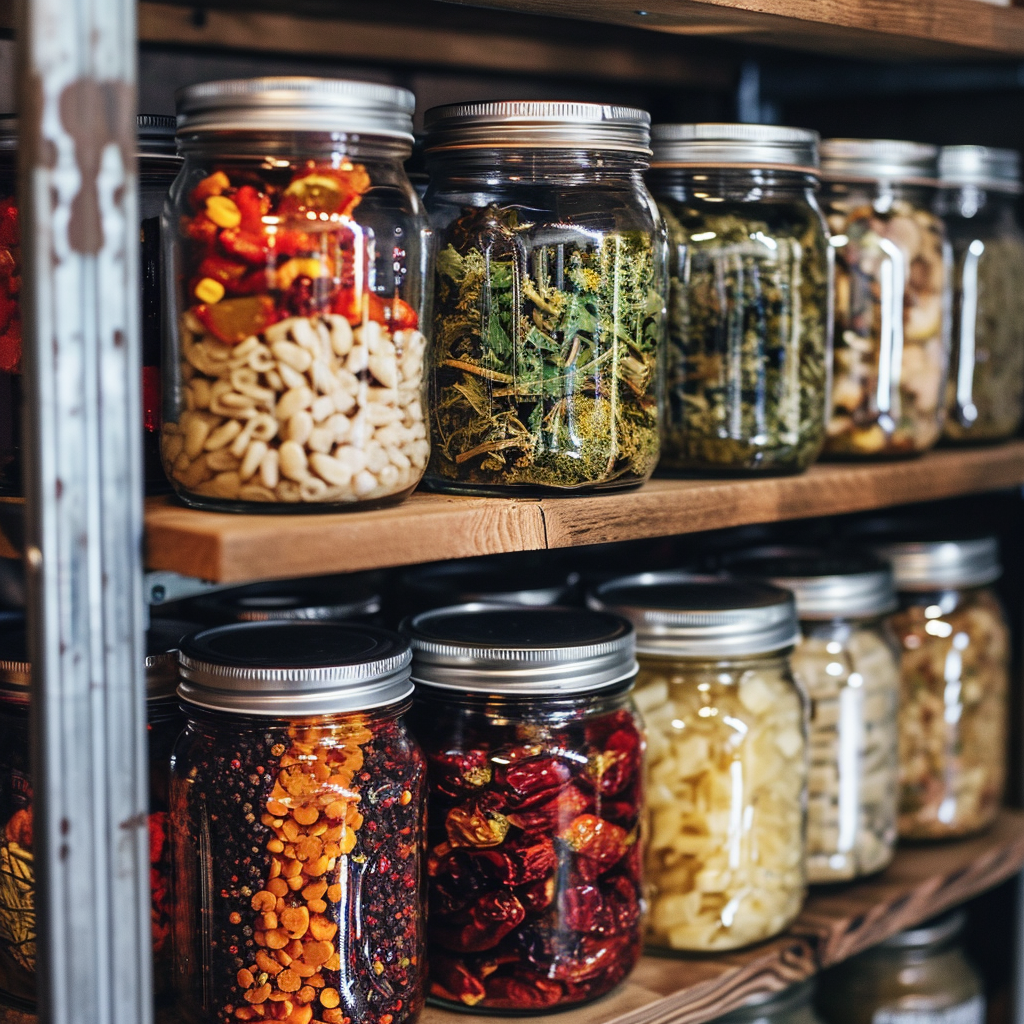
Categories of Best Foods for Prepping
Canned and preserved foods
Canned and preserved foods are excellent options for prepping due to their long shelf life and ease of storage. They are also convenient, as they require little to no preparation. Some popular canned and preserved foods for prepping include canned meats, vegetables, fruits, soups, and sauces.
Dried goods and grains
Dried goods and grains, such as rice, pasta, beans, and lentils, are staples in any prepper’s food supply. They are affordable, easy to store, and have a long shelf life. Dried goods can be used to create a variety of meals, providing sustenance and nutrition during emergencies.
Dehydrated and freeze-dried foods
Dehydrated and freeze-dried foods have gained popularity among preppers due to their long shelf life, lightweight nature, and nutritional value. These foods undergo a preservation process that removes moisture, extending their shelf life significantly. They are easy to store and rehydrate, making them a convenient option for emergencies.
MREs (Meals Ready to Eat)
MREs, or Meals Ready to Eat, are pre-packaged meals that are designed to provide complete nutrition and sustenance in emergency situations. Often used by the military, these meals are convenient, require no cooking, and have a long shelf life. They come in various flavors and include main dishes, sides, snacks, and even desserts.
Seeds for sprouting
Seeds for sprouting, such as alfalfa, mung beans, or broccoli sprouts, are an excellent addition to any prepper’s food supply. Sprouts are packed with nutrients and can be grown indoors, even in small spaces. They provide a fresh source of vitamins and minerals during emergencies.
Foods rich in essential nutrients
It is important to include foods that are rich in essential nutrients in your prepping supplies. Some examples include nuts and seeds, which provide healthy fats and protein. Additionally, consider including vitamins and supplements to ensure you meet your nutritional needs even in difficult circumstances.
Essential Staple Foods for Prepping
Rice and pasta
Rice and pasta are staple foods that are easy to store, affordable, and have a long shelf life. They provide a good source of carbohydrates for energy and can be used as the foundation for many meals.
Beans and legumes
Beans and legumes, such as black beans, chickpeas, and lentils, are excellent sources of protein and fiber. They are affordable, versatile, and can be stored for an extended period.
Oats and quinoa
Oats and quinoa are nutritious grains that provide a good source of fiber and essential vitamins and minerals. They can be used for making porridge, baking, or as a side dish.
Flour and baking essentials
Flour and baking essentials, such as yeast and baking powder, are essential for making bread, biscuits, or other baked goods. They can be stored for a relatively long time and are versatile ingredients.
Sugar and salt
Sugar and salt are pantry staples that can be used for various purposes, including preserving food, baking, and adding flavor. They have an indefinite shelf life when stored properly.
Canned fruits and vegetables
Canned fruits and vegetables are nutritious and easy to store. They provide important vitamins and minerals, adding variety to your prepping food supply.
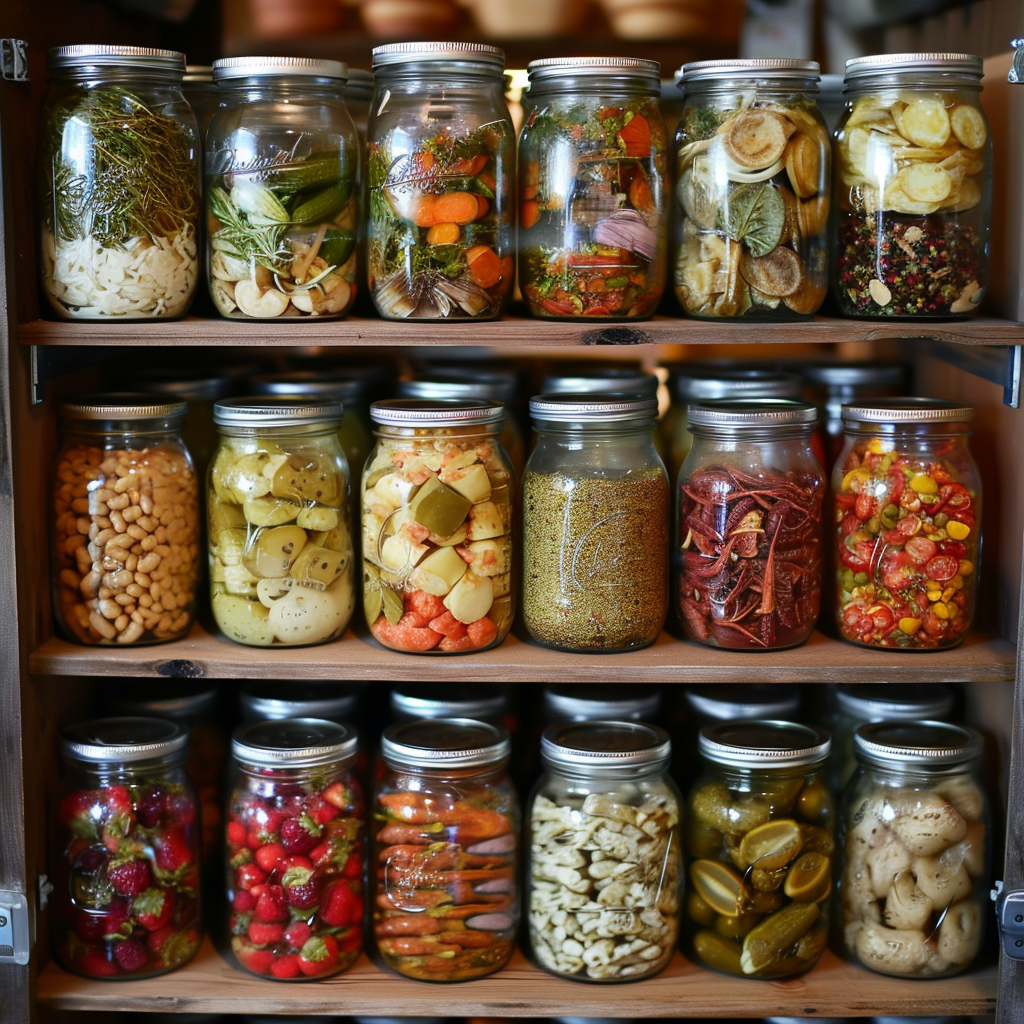
Protein Sources for Prepping
Canned meats and fish
Canned meats and fish, such as tuna, salmon, and chicken, are excellent sources of protein. They are convenient, have a long shelf life, and can be used to prepare various dishes.
Jerky and dried meats
Jerky and dried meats provide a good source of protein and are easy to store. They are lightweight, making them ideal for emergency situations where portability is critical.
Peanut butter and nuts
Peanut butter and nuts are high in protein, healthy fats, and other essential nutrients. They provide a quick and easy source of sustenance and can be stored for a long time.
Protein powders and bars
Protein powders and bars are compact and easy to store. They provide an efficient way to meet your protein needs, particularly during emergencies when resources may be limited.
Dehydrated eggs and dairy products
Dehydrated eggs and dairy products, such as powdered milk or powdered eggs, provide a convenient and long-lasting source of essential nutrients. They can be rehydrated and used in numerous recipes.
Long-lasting Fats and Oils for Prepping
Coconut oil and olive oil
Coconut oil and olive oil are healthy fats that have a long shelf life. They can be used for cooking, baking, or even as a source of skin and hair care during emergencies.
Ghee and butter
Ghee and butter have a longer shelf life compared to other dairy products. They can be used for cooking, adding flavor to meals, or even as a source of fuel for candles or lamps.
Crisco and shortening
Crisco and shortening are stable fats that can be stored for an extended period. They are versatile, used in baking and cooking, and provide a good source of calories.
Nuts and seeds
Nuts and seeds, such as almonds, walnuts, or chia seeds, are rich in healthy fats and can be stored for a long time. They provide important nutrients and can be enjoyed as a snack or used in cooking.
Canned oils and oil blends
Certain oils, such as canned vegetable oil or oil blends, can have a longer shelf life compared to their bottled counterparts. They can be used for cooking or as a source of light during emergencies.
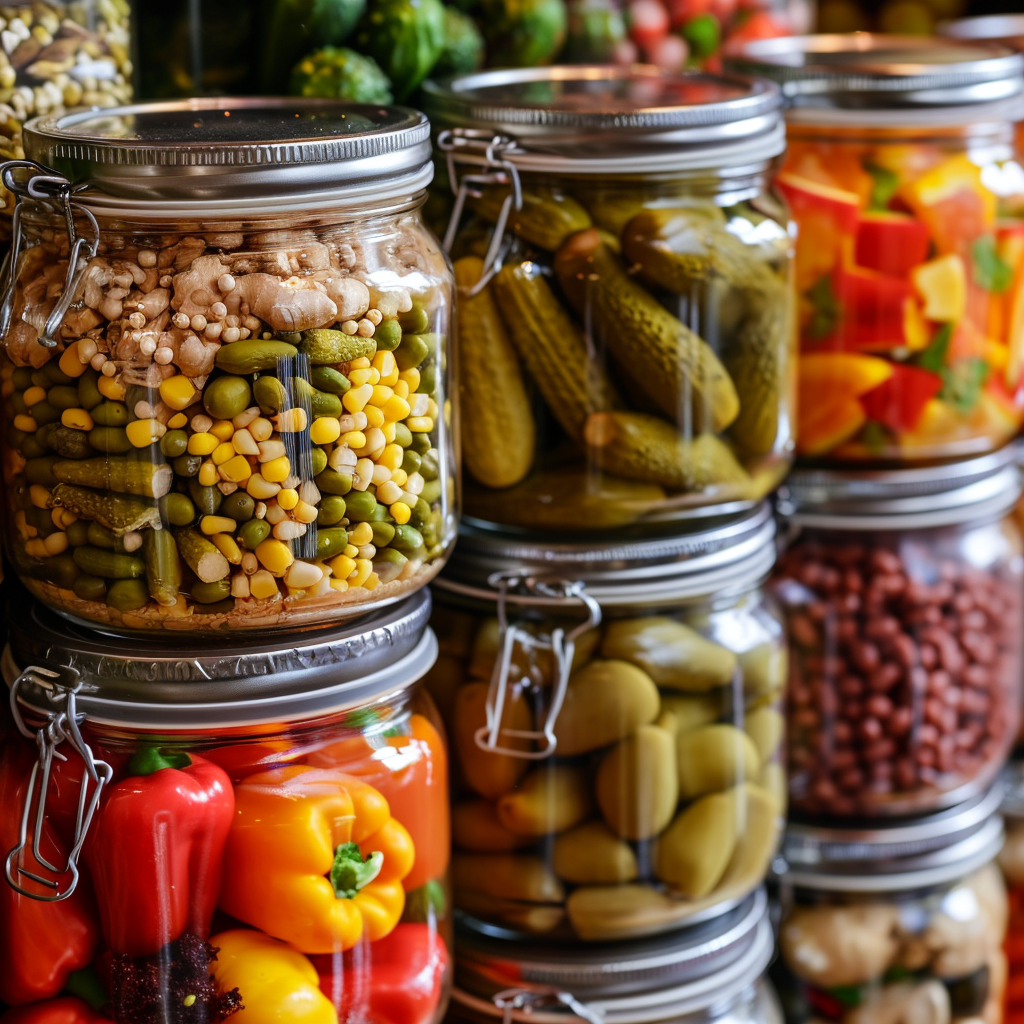
Alternative Food Sources for Prepping
Foraging and wild plants
Foraging for wild plants can provide a supplemental source of fresh food during emergencies. It is essential to educate yourself on edible plants in your region and how to safely identify and prepare them.
Hunting, fishing, and trapping
Hunting, fishing, and trapping can provide a sustainable source of protein in certain situations. It is important to have the necessary skills, permits, and equipment to engage in these activities.
Livestock and poultry for self-sustainability
Raising livestock and poultry can provide a self-sustainable source of food during emergencies. Chickens, rabbits, or goats can provide a consistent supply of eggs, meat, or dairy products if properly cared for.
Gardening and food preservation
Gardening allows you to grow your own vegetables and fruits, providing a sustainable source of fresh food. Learn about food preservation techniques such as canning, drying, or fermenting to store the surplus produce.
Aquaponics and hydroponics
Aquaponics and hydroponics are alternative farming methods that allow you to grow food without soil. These systems can be set up indoors and provide a continuous supply of fresh produce, particularly in urban environments.
Considerations for Special Dietary Needs
Gluten-free and allergen-free options
For individuals with gluten intolerance or other food allergies, it is crucial to consider storing gluten-free and allergen-free options. This can include alternative grains, such as quinoa or rice, and specialized pre-packaged gluten-free products.
Vegetarian and vegan alternatives
For those following a vegetarian or vegan lifestyle, it is essential to select plant-based protein sources and incorporate a variety of fruits, vegetables, grains, and legumes into your prepping supply.
Low-sodium and diabetic-friendly choices
If you have specific dietary restrictions, such as a low-sodium or diabetic-friendly diet, consider selecting foods that meet these requirements. Look for low-sodium or salt-free options, as well as low-sugar or sugar-free products.
Child and infant-specific foods
If you have infants or young children, it is important to store foods that are suitable for their age and development. Include baby food, formula, and other age-appropriate snacks or meals in your prepping supplies.
Supplements and vitamins
Consider including vitamins and supplements in your prepping supplies, particularly if you have specific nutritional needs. This can help ensure that you meet the recommended daily intake of essential vitamins and minerals.
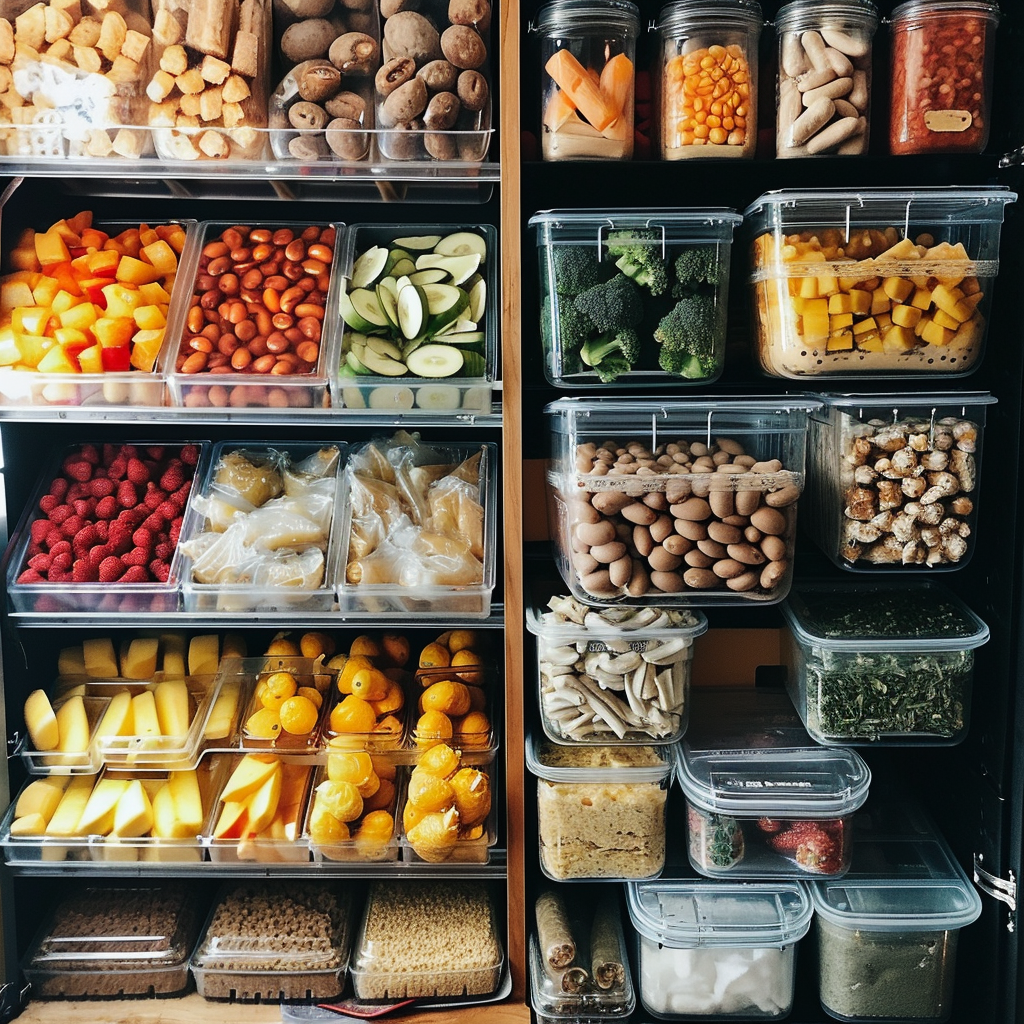
Conclusion
In conclusion, prepping is an essential practice that allows individuals to be prepared for unforeseen circumstances. When it comes to selecting the best foods to store for prepping, several factors need to be considered, including nutritional value, shelf life, and storage space. By prioritizing staple foods, protein sources, fats and oils, alternative food sources, and considering special dietary needs, you can build a well-rounded and resilient food supply. Remember, being prepared is not just about food storage; it also involves having the necessary skills, equipment, and plans in place to navigate emergencies successfully. By taking these steps, you can ensure the safety and well-being of yourself and your loved ones during challenging times.




